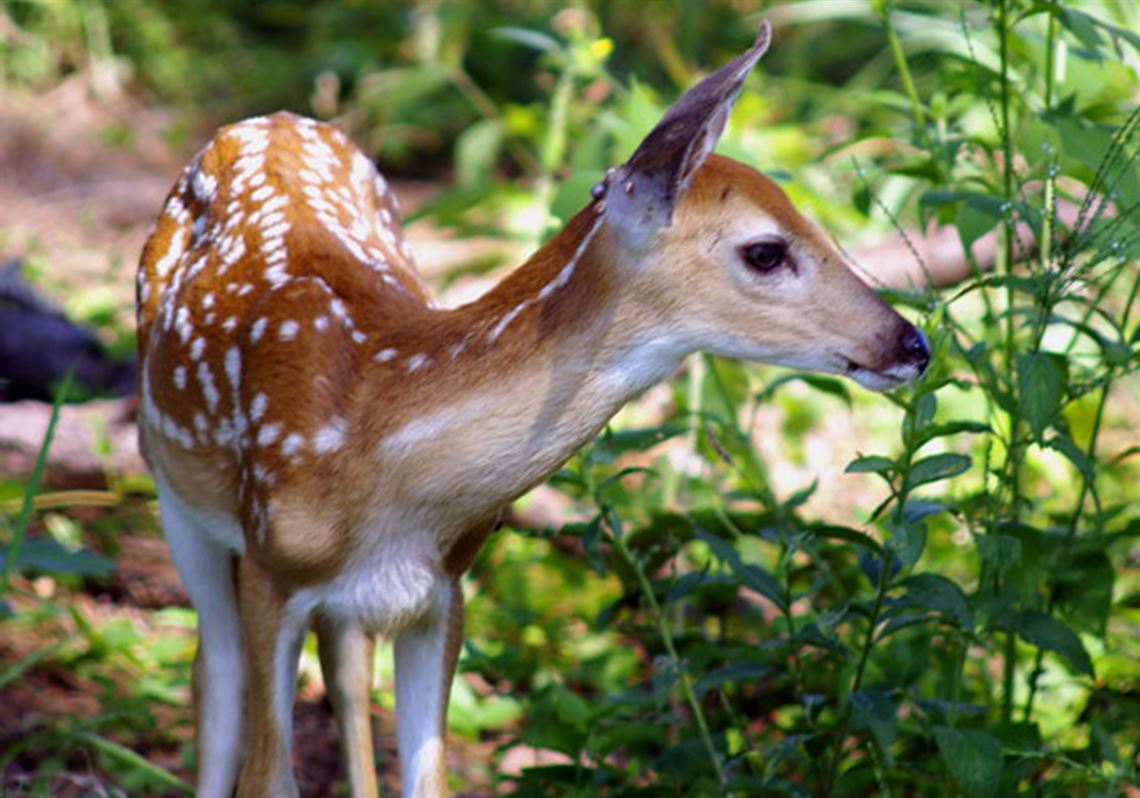The “Let’s Talk About Parks” series is designed to encourage exploration and discovery of Pittsburgh’s urban parks.
There are lots of types of lotteries in the human world, and by design most are ones that nearly everyone would love to win. Lotteries are by design something in which everyone involved contributes something with the hope that they may be the one chosen to win a wonderful prize. Some lotteries, though, are ones where the prize is simply something you see.
Invest an hour in a walk through one of our city parks during the late springtime, and you may just be rewarded with rare but amazing sites. At the playground in Riverview Park you may see a hawk flying over you on its way to deliver food to its baby. Highland Park may reward you with a mother duck swimming with her brood of 10 or more ducklings, and Schenley and Frick parks have blankets of native flowers that are now in full bloom. And if you’re really lucky, you may win the nature lottery by seeing a sleeping baby deer nestled in the tall grass.
Baby deer are called fawns, and in our region nearly 90 percent are born from May 22 through Aug. 4. The sleek reddish tan coats of fawns are mottled with multiple white dots that usually include neat rows of spots that run along the top of both sides of the spine. These spots help camouflage the fawn, making it blend in with the varied woodland foliage and mottled sunlit forest floor.
As a fawn grows into an adult deer, its sense of smell increases exponentially, allowing it to sniff its potential predators and escape to safety. With that keen sense of smell in place, the deer no longer needs spots to help hide it, and the spots usually disappear as its adult coat grows in.
Fawns have little scent due to their mothers’ careful grooming and clean-up skills. Mother deer will consume the urine and waste of their fawn so that the scent will not remain for predators to smell. They also take care to lick the silky coat of their fawns to keep them clean and scent-free. This brings us to what you should do if you see a fawn snuggled into a bed of woodland grass. Seeing a tiny deer curled up and very still in the wild brings questions: Is it alive? Is it abandoned? Is it lost? And, should you touch it?
A baby fawn alone in the woods is probably soundly asleep or lying very still in the hope that you don’t see it. It’s unlikely it has been abandoned, as after the first few days of life — during which the fawn imprints an unbreakable bond with its mother — does are extremely loyal to their young. We often spot fawns alone because for the first few weeks of their life, a doe will only interact with its fawn two or three times a day.
At sunrise and sunset, and sometimes once in between, mother deer will nurse their young and then wander off in search of food or to keep watch for predators. Fawn will choose their own bedding location and will frequently move the location as they please. While it may be tempting to pet a sleeping fawn, it’s best to not touch them as our human scent may be transferred to the baby deer, attracting other not-as-friendly animals. While they appear to be all alone, the mothers are usually no more than 300 feet away.
Visit www.pittsburghparks.org for city park maps and suggested trails.
First Published: May 31, 2016, 4:00 a.m.

















